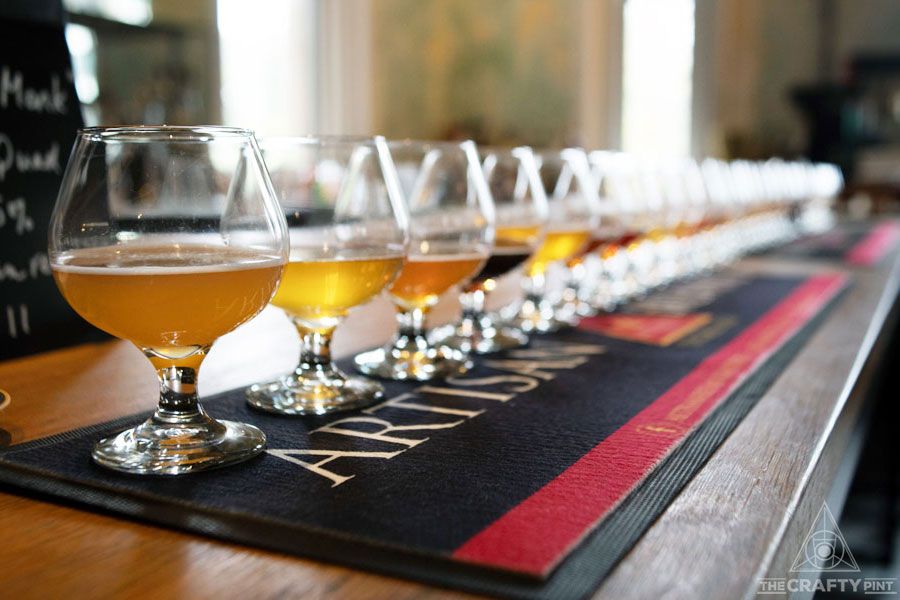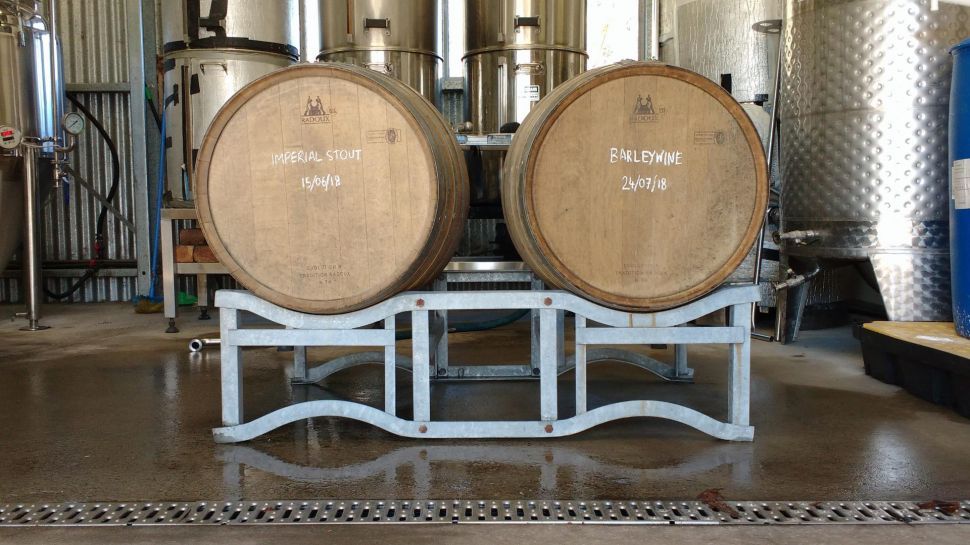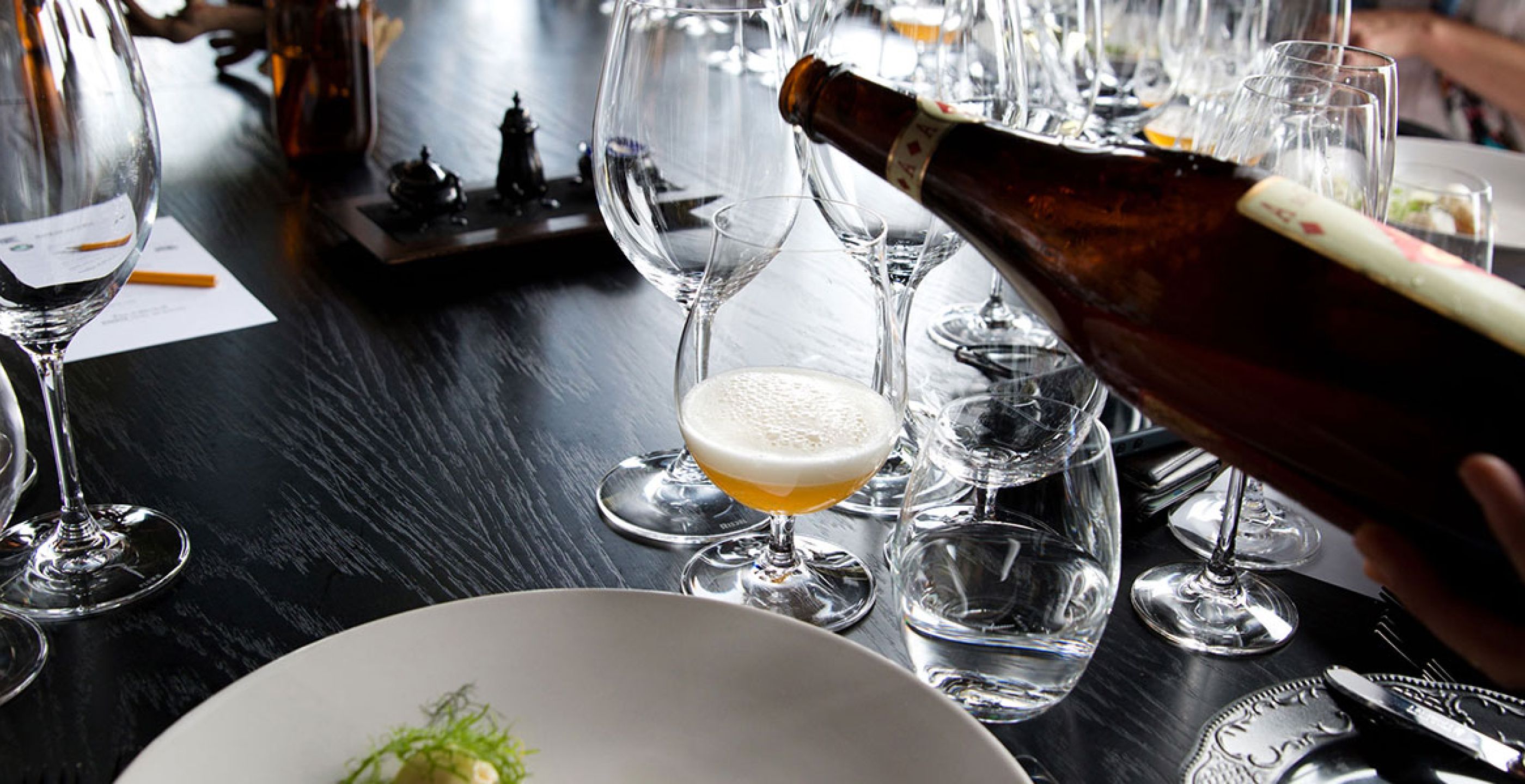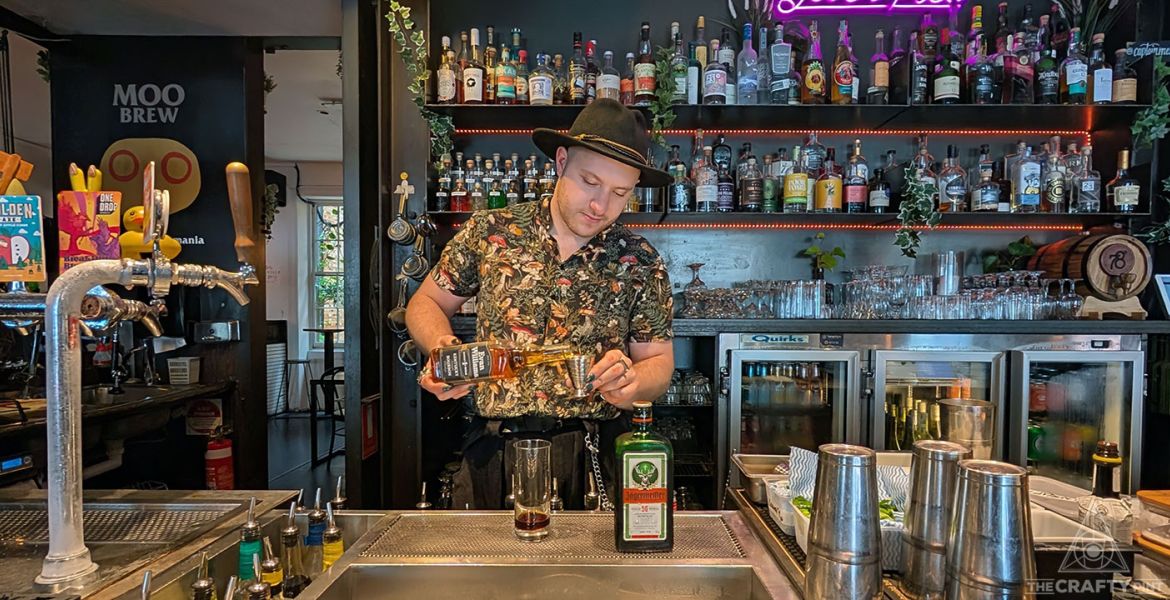A version of this first appeared in The Great Australian Beer Guide, written by The Crafty Pint's founder, James Smith, and published by Hardie Grant.
To get the best out of your beer, it should be served in optimum conditions. This can mean using an appropriate glass and drinking it at the right temperature. Better still, it should involve drinking it in the right setting and, ideally, with good company.
If this sounds a little over the top for beer, for which the choice of serving vessel has traditionally been stubby or can, pot, schooner or pint, then consider this: would you serve ice cream warm, on a plate, with a fork? Have you considered offering houseguests a pot of tea in which the teabags have been suspended in cold water straight from the tap? Would you serve shiraz cold in a tumbler? OK, on that last one, if the wine and time are right, then maybe...
The point is that beer, at least beer brewed to be savoured, deserves to be treated no differently than any other food or beverage. Steadily, Australians are waking up to that fact and are beginning to appreciate the diversity, versatility, quality and complexity inherent in good beer and according it similar respect to that granted to everything from wine to cheese to coffee. Once that is understood, it makes perfect sense to want to serve and enjoy every beer in the best way possible.
In some cases, brewers will suggest the ideal serving temperature for a beer on the label of the can or bottle; occasionally they might even suggest the perfect glass from which to enjoy it.
Ultimately, however, if you are drinking a beer you want to savour then the most important rule when it comes to choosing the appropriate glass for a beer is this: use a glass.
Simply by using a glass rather than drinking straight from a bottle or can, you instantly enhance your appreciation. To fully enjoy a beer, we must engage our entire olfactory system, as what we actually taste via our taste buds – sweet, salt, bitter, sour and umami – is only a small percentage of the overall experience. Those tastes without the accompanying aromas tell only a tiny part of the story.
Think back to the last time you had a cold. Your nose was blocked and your head was stuffy: did food taste the same or did it appear bland? In effect, by drinking beer from a bottle or can you are creating for yourself that same handicap: locking in the aromas and only allowing yourself to experience a piece of what the brewer intended. Once the beer is poured into a glass, it opens up and releases those aromas in full: fruity, spicy, or earthy hops; sweet, nutty or roasted malts; fruity, herbal, or peppery esters from the yeast. If a brewer is going to the trouble of creating a beer with aromas that could encompass orange blossom or coriander, pine cones or sherbet, lychees or leather, clotted-cream toffee or Vegemite, it’s just rude to keep them under virtual lock and key.
The second most important rule when it comes to glassware is to ensure it is clean. This may sound like a case of stating the bleeding obvious, but with beer it is particularly important. Residue, even that left by washing-up liquid, can kill a beer’s head, which isn’t there just to look pretty but plays host to the aforementioned aromatics. A beer’s head can also act as a form of "liquid bottle top", protecting the beer in your glass from the unwanted effects of oxygen.
Beyond this, it depends how far you want to go. If you have room for just one beer glass in your cupboard, the best option is to go for some form of goblet with room in which to swirl the contents and release those all-important aromas.

If you want to go further than the one-stop-shop of the goblet, there are specialist, beer-specific designs out there that allow you serve every beer as the brewer intended. Some of the best-known and iconic style-specific glasses include those used for German weissbiers: they’re tall, curvaceous – almost voluptuous – affairs designed to maintain the beer’s thick, fluffy head. Pilsner glasses are traditionally tall and thin, highlighting the colour and clarity of their contents.
In Belgium, where beer is held in higher regard than any other country, you find some of the most beautiful glassware. Many brewers produce their own large, stemmed, tulip-shaped goblets designed to make the most of the beer’s wonderful aromatics and retain its foamy head. Others, including the Trappist breweries, have their own particular design of glassware akin to a chalice. Some look almost too good to drink from, as if they should be perched on your mantelpiece; that is, of course, until you sample the beer for which the glass is intended and realise, in many cases, that nothing could be too good for it.
Of course, while you may wish to dedicate an entire shelf to a range of glassware, any clean, stemmed wine glass will ensure your beer-drinking experience is far superior to merely cracking a can or knocking the cap off a bottle and glugging straight from the neck.
For the most part, when drinking in a pub you’ll be handed a standard pot, schooner or pint glass. None are designed with any great focus on showcasing aromas and flavours at their best; the flip side is that, in most cases, if you’re drinking at the pub the priority should be socialising rather than in-depth analysis of the contents of your glass. That said, many specialist beer bars now use stemmed tulip glasses, while a handful even have some high-end glassware for use with their fanciest tipples.
As for temperature, it also plays a significant role in the enjoyment of beer. The colder a beer is, the less its aromas and flavours come into play. For pale lagers and pilsners, this is less of an issue as they are generally clean, dry beers – but serving many other styles too cold means locking away much that is good about them. Thus, particularly with richer, heavier, darker beers, it is best to remove them from the fridge to allow them to warm a while before consuming them. With many beers, you will notice the flavours and aromas changing significantly as they warm in your glass.
Storing Beer

With the vast majority of beer styles, the mantra "fresh is best" is apt. More often than not, a beer will never taste better than the first day it is tapped, ideally at a bar at the brewery where it has been brewed. This is particularly true with lighter and hop-forward beers, with hop aromatics the first thing to fade in a beer in the months after it is released. Beer is also affected negatively by heat and light, so the best place to store it if you’re not consuming straight away is in your fridge.
That said, there are certain beer styles that are designed to age and that can develop greater complexity and interest over time. These include strong Belgian ales, barley wines and imperial stouts and porters. Ideally, to mature these beers they should be kept in a cool cellar but, given most Australian homes don’t come with cellars, the coolest, darkest spot you can find in your home may have to do.
Alternatively, an extra fridge set at warmer, cellar-like temperatures than your main fridge would suffice, with the main goal being to ensure a steady temperature. I know my wife loves the fact I have two fridges at different temperatures for beer. And still clog up the one supposedly for food…
Photo at top of article by Jessica Shaver.




















